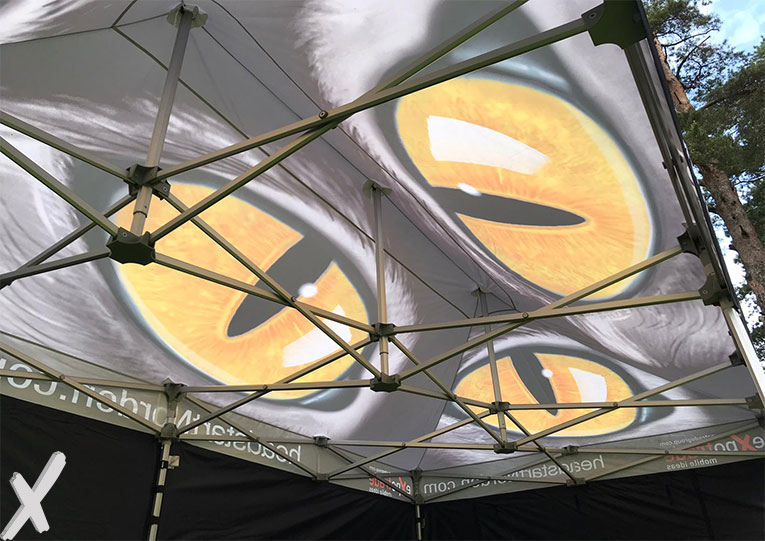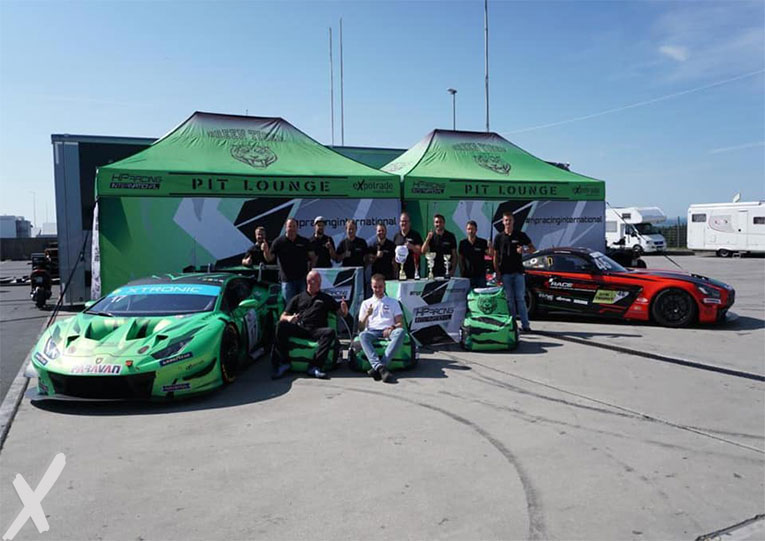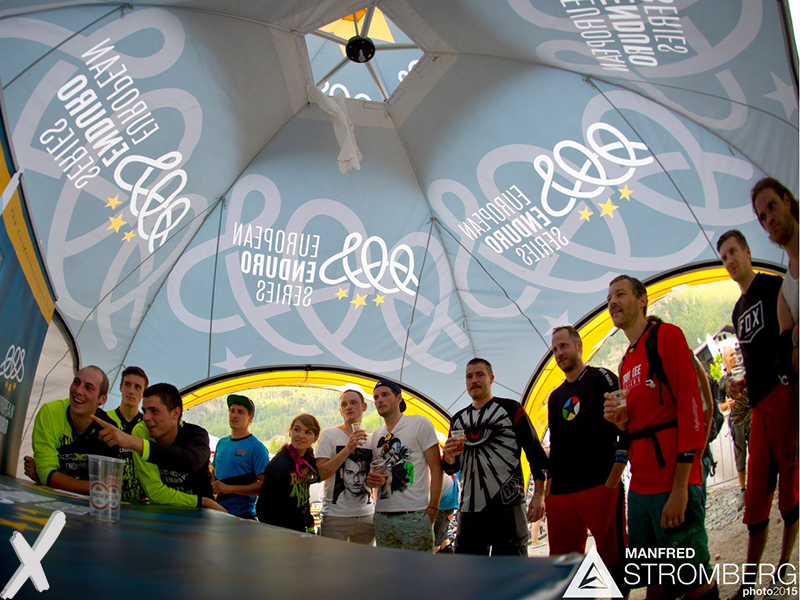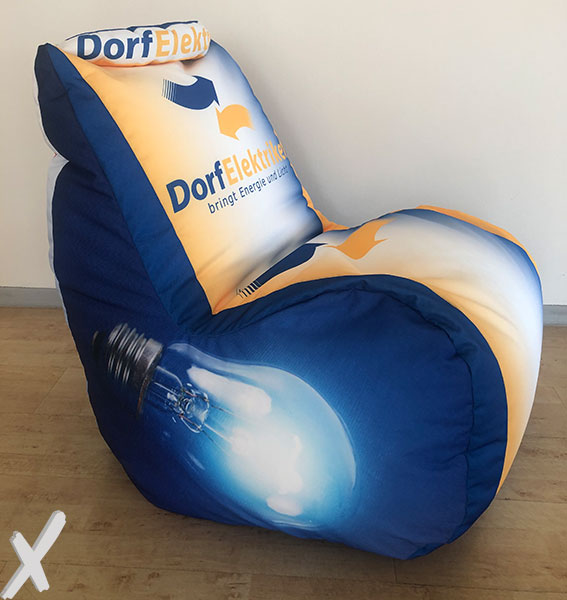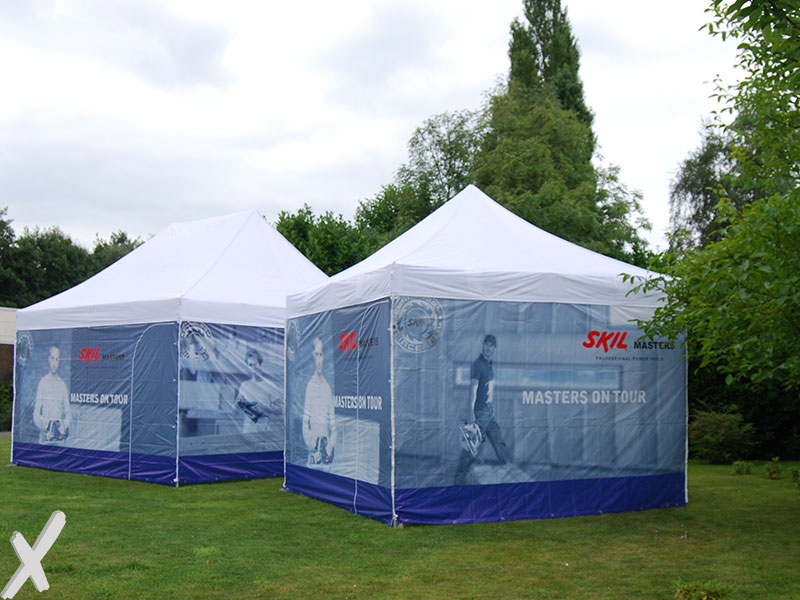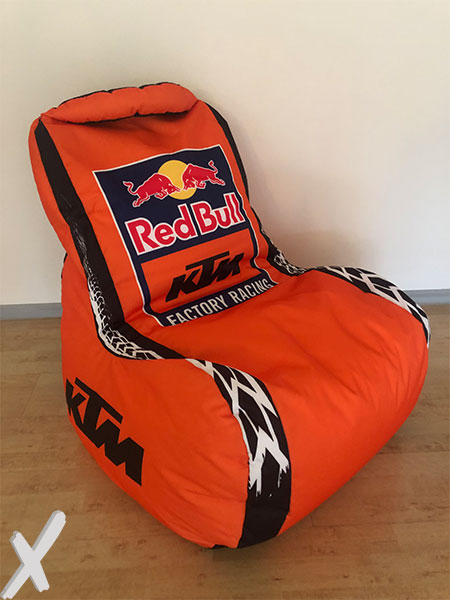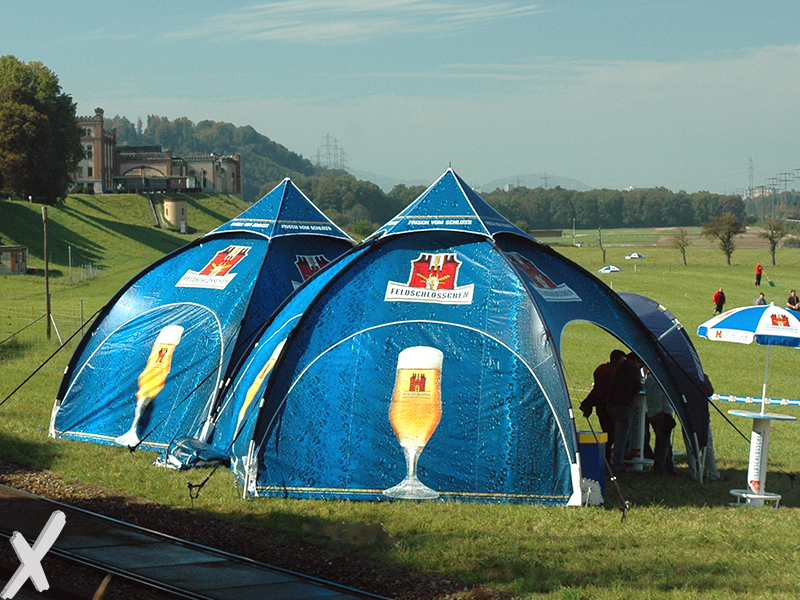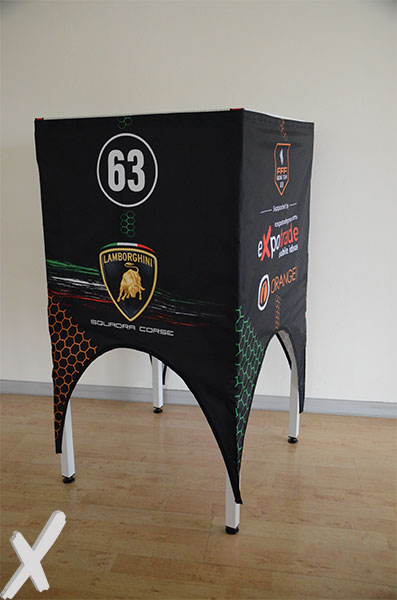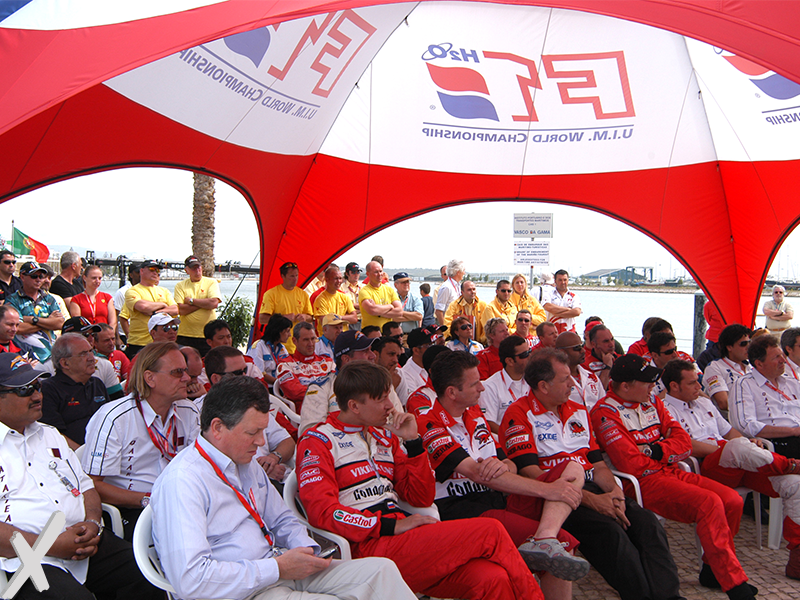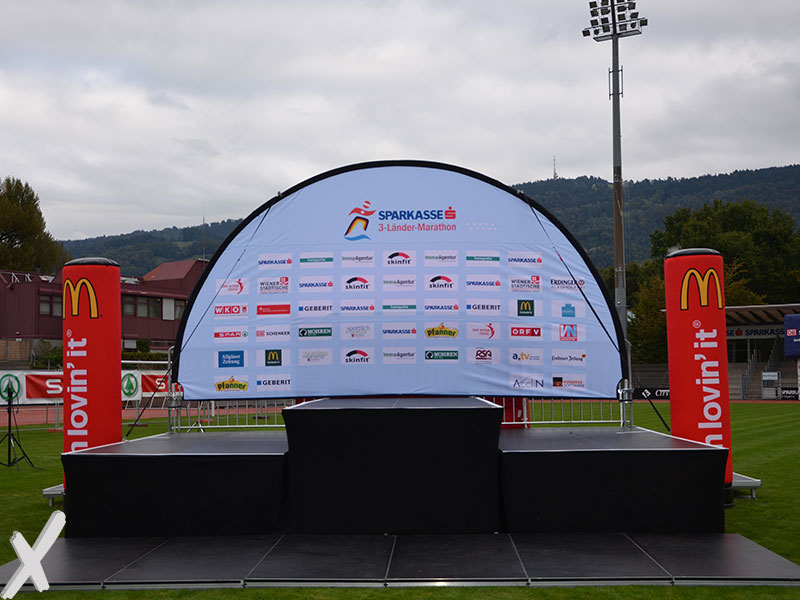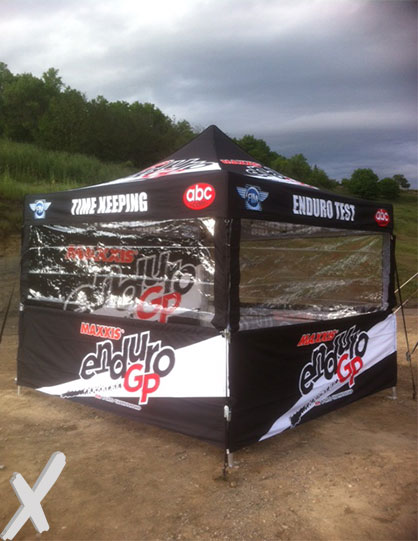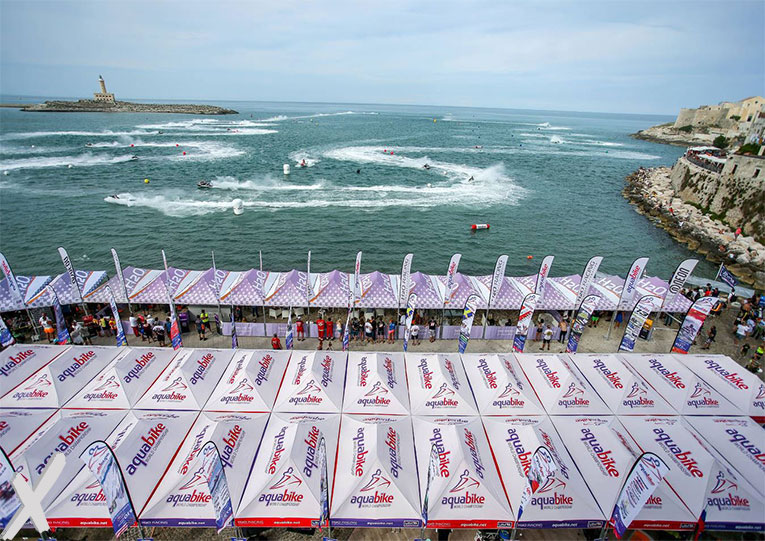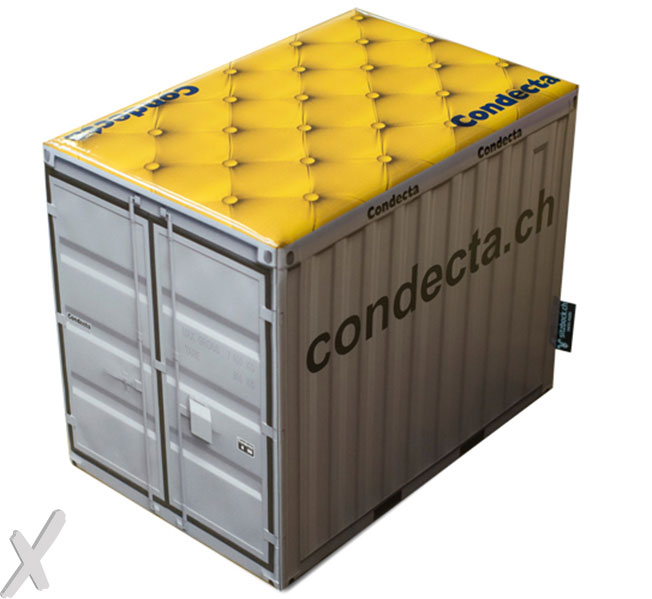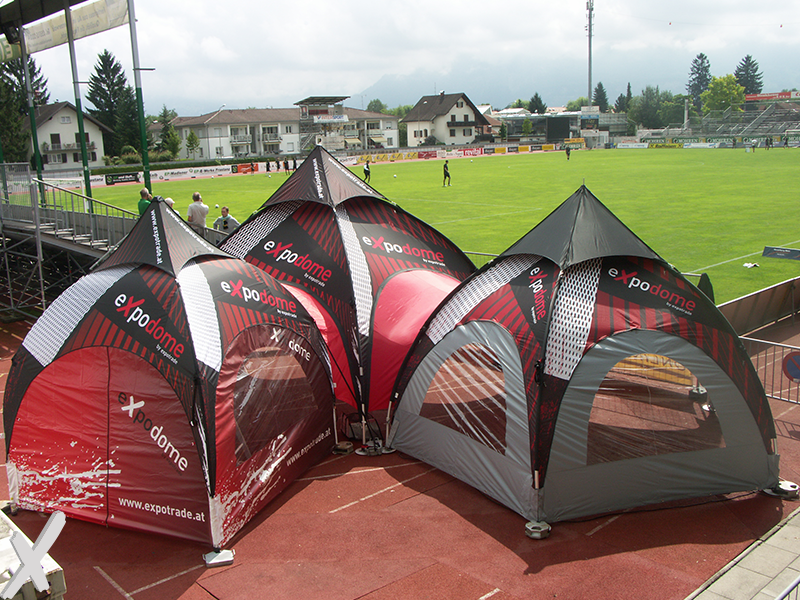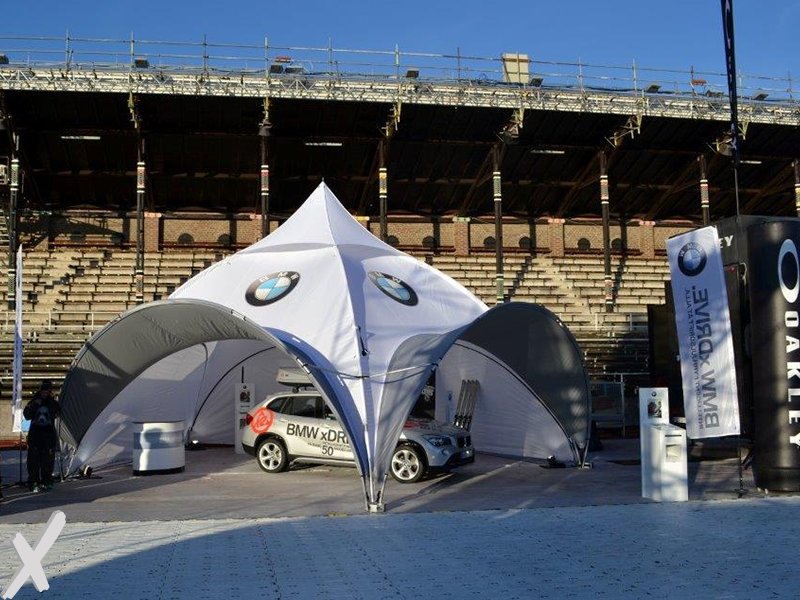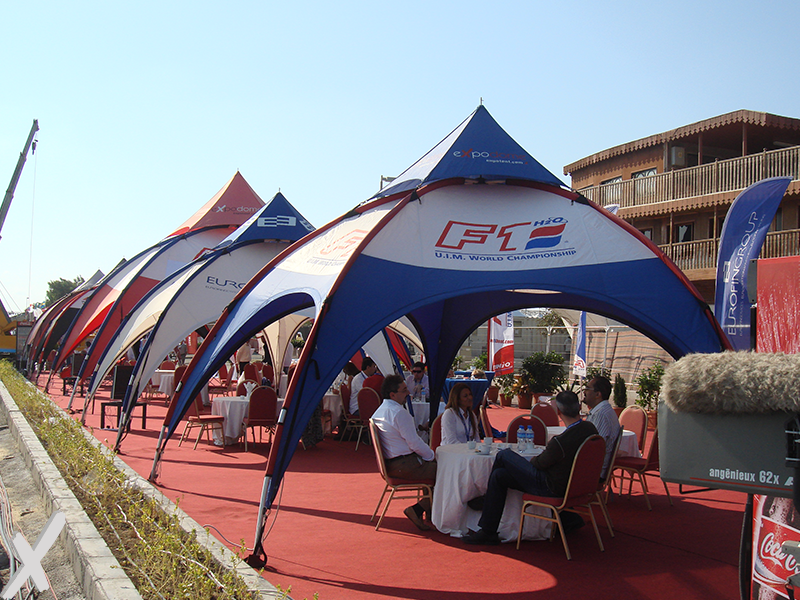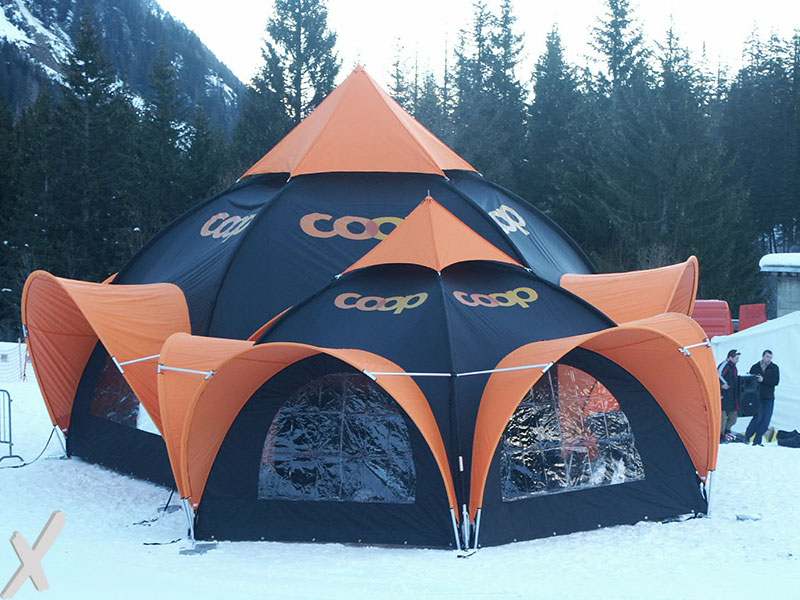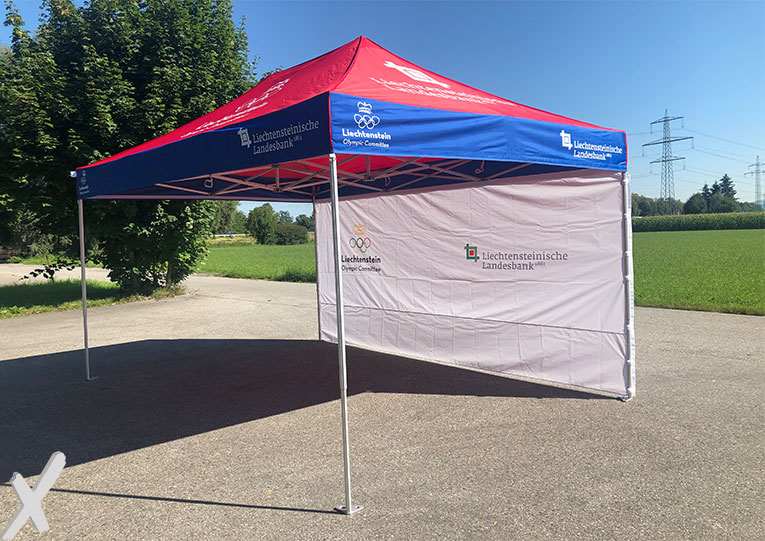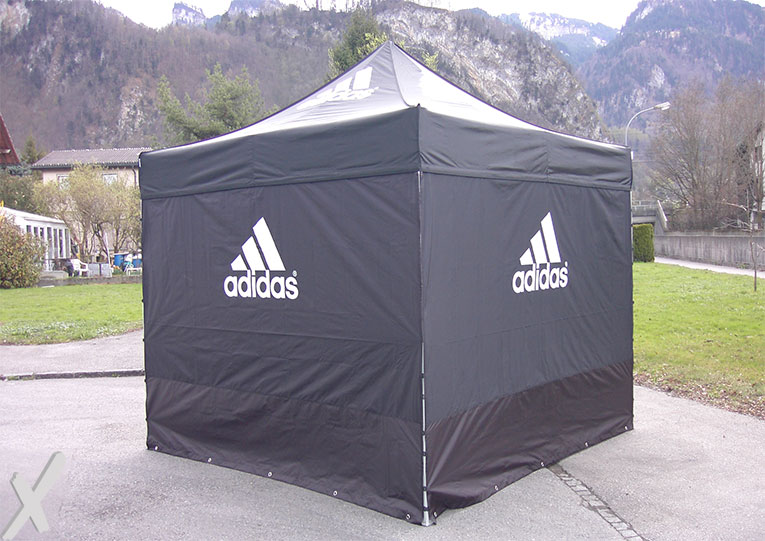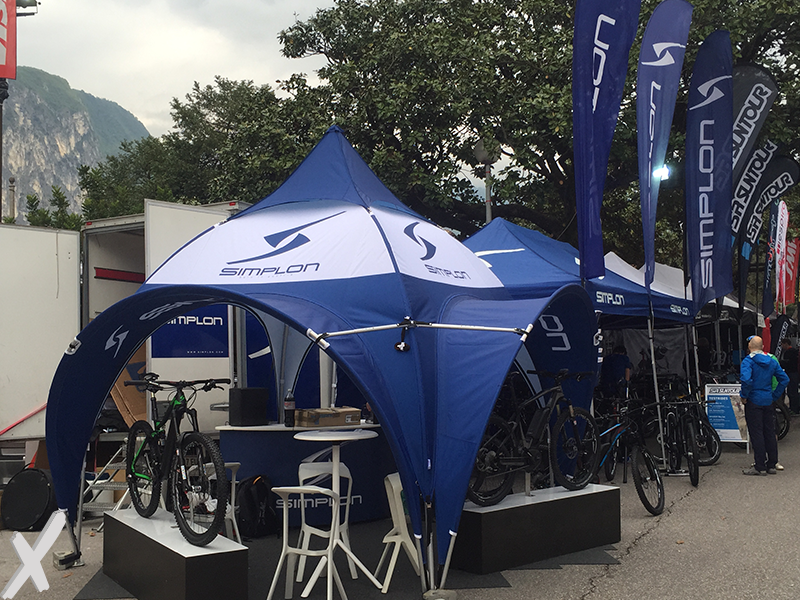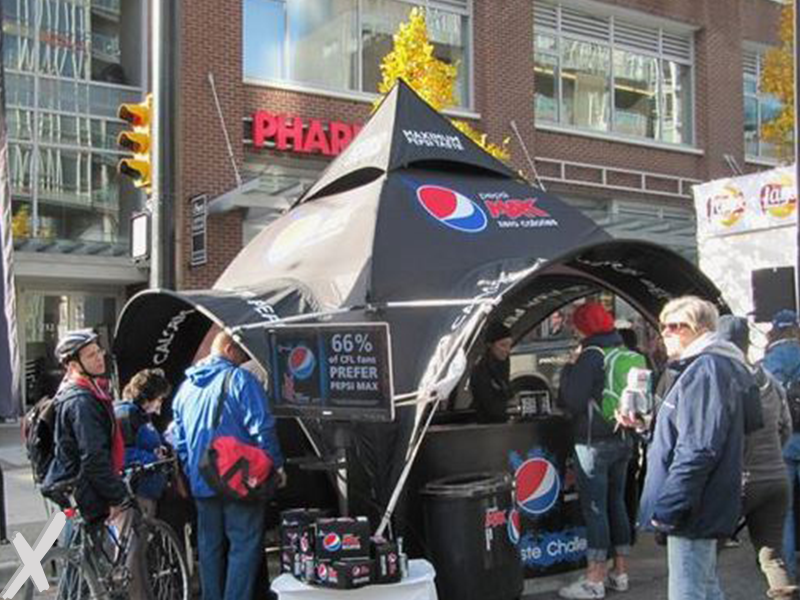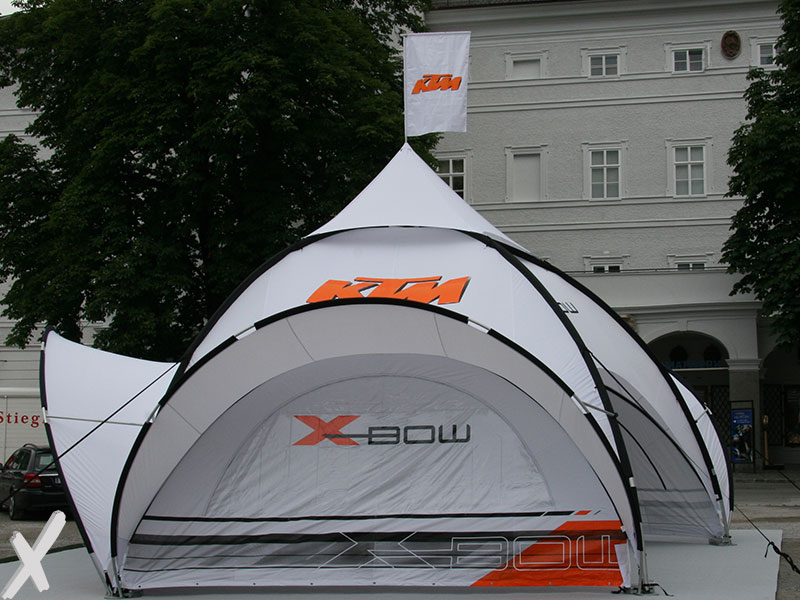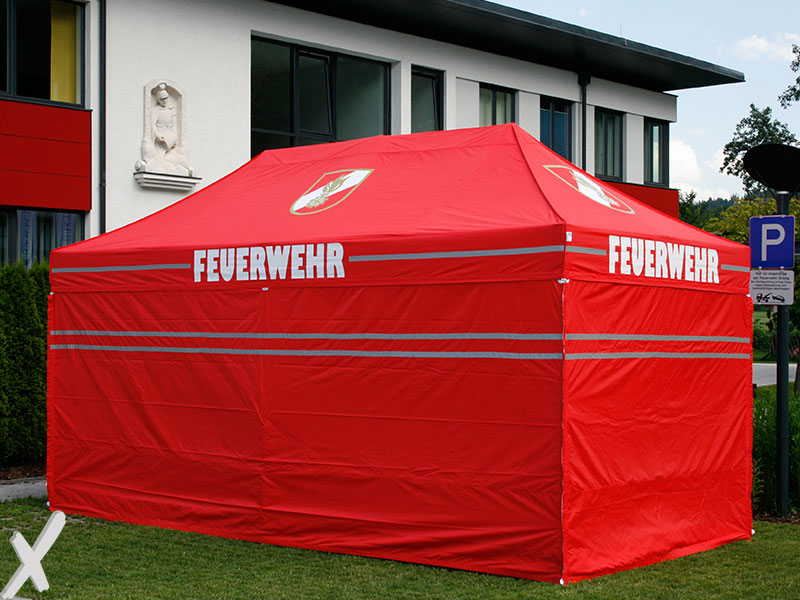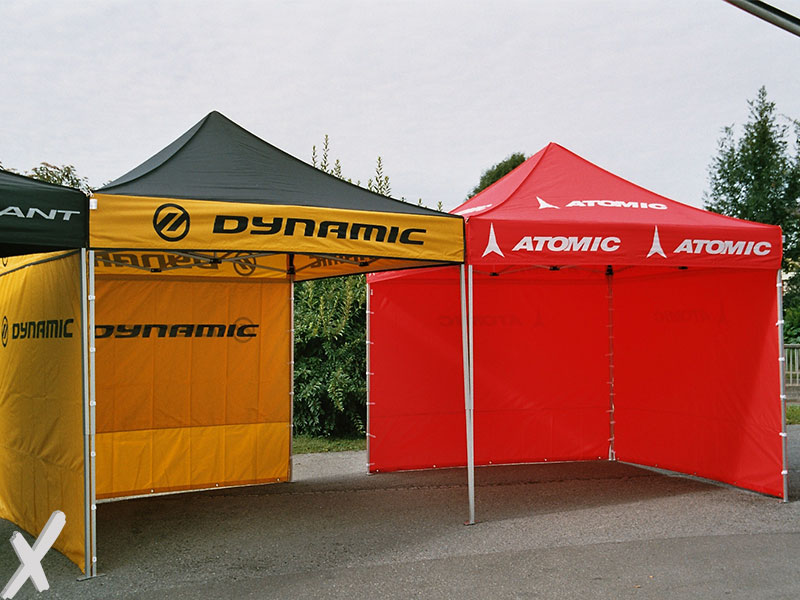sublimation print or silkscreen print
SUBLIMATION
With this printing process, the ink is mirror-inverted on a transfer paper with a digital printer and the paper is fed into the so-called hot calander together with the desired tent fabric. An oil-filled drum heated up to 200 ° C burns the ink into the fabric and thus seals it in the fibers of the fabric. The color is in the fabric and not just on the surface of the fabric, as is the case with thermal film, for example. This means longevity and good protection against mechanical effects such as scratching, scraping or the like. The great advantage of sublimation printing is that especially multicolored logos and gradients can be printed without any problems. Full-area panoramic images on side walls or roofs etc. are no longer a problem with sublimation and the constant development of the printing process and the associated inks mean that brilliant color images are now possible. Another advantage of this printing process is that when the interior of a folding tent or dome tent is illuminated, the printed image shines perfectly outwards, as the print can only ever be made on white fabric. Note: about 70% of the printed image shines through on the reverse side of the fabric, so that e.g. logos etc. are also visible inside the gazebo.
SCREEN PRINTING
Screen printing is one of the oldest printing processes and was only supplemented by digital printing and sublimation printing around 15 years ago. Screen printing impresses with its perfect durability and UV protection, as the color is applied in several layers to the dyed fabric. Screen printing is particularly suitable for larger editions with the same logo, as you need a separate film and screen for each logo and each printing color. In contrast to sublimation printing, screen printing can be printed on any color of fabric and is particularly suitable when the inside of the tent should appear in the same color as the outside. Although the trend is towards sublimation due to the trendy multicolored logos, screen printing is still an ideal option for low-cost production of larger quantities. Due to the sophisticated technology that has been tried and tested for many years, screen printing is still beautiful and technically flawlessly durable even after 15 – 20 years of use.

